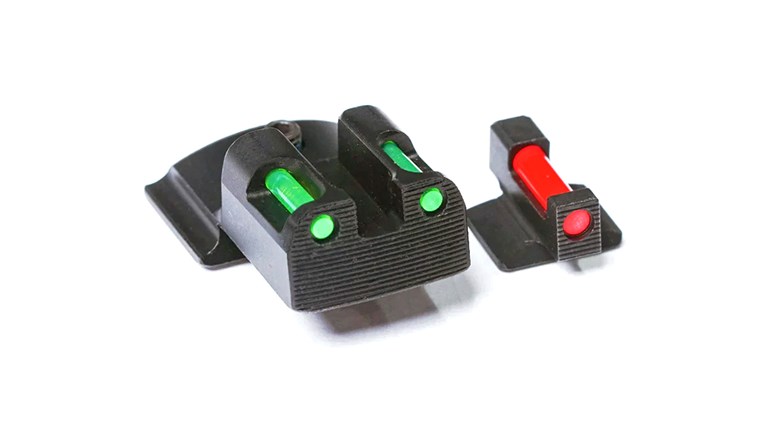
Witness marks provide a quick-and-easy method of confirming whether your firearm’s screws, including those anchoring your MRDS in place, are adequately torqued or if they have gradually loosened under the forces of recoil.
I just became the proud owner of a single-shot pistol I found at the local gun shop. I intend to use it for target practice and maybe even hunting once I get good enough. The price was so good that I wanted to get it and go before the guy behind the counter changed his mind. For that reason, I did not look it over too closely until I got it home to examine it more thoroughly. Upon taking a closer look, I noticed what appeared to be a dark-colored nail polish on every screw and pin on the exposed surfaces of the gun. Not knowing the reason for the markings, I called the gun shop and described what I had discovered. What
I got was a very matter-of-fact answer that they were witness marks—like I should have known that already. I hung up the phone knowing no more than I did before the call.
What are witness marks, and why would anybody go to the trouble of putting nail polish on a screw?
J.D., Marion, VA
A witness mark is a visible reference point involving two or more parts on an object such as a gun, and their positioning or orientation as they relate to one another.
Often, when firearms are involved, the position of a screw—once tightened to its final torque setting—is marked with a visual indicator so that at a glance, the position of the screw can be verified as correct or to quickly see if it has moved subsequently.
Precision objects such as sights, sight mounts, scope mounts and scope rings must remain consistently fixed once installed to deliver the accuracy they are mechanically designed to provide.
Some shooters who frequently make elevation and windage changes on their guns place witness marks on adjustment mechanisms in order to keep track of their sight settings when shooting in varying conditions.
While screws are most often thought of when considering witness marks, other parts such as threaded nuts, pins or levers that are designed to remain stationary as part of their design can also benefit from having a witness mark to ensure their position has not changed since the original installation.
Some witness marks physically lock the parts being joined together, such as staking the castle nut to hold the buffer tube (receiver extension) in place on an AR’s lower receiver. Other witness marks requiring less permanence, but adequately reference parts such as screws for telescopic sight rings that can be marked with a contrasting paint pen or a similar substance such as fingernail polish.
Not only does the witness mark verify unintentional movement of a part such as a screw, but it also provides a reference to return to should the screw be intentionally loosened or removed for service or maintenance. An important thing to keep in mind is that sometimes parts wear or stretch, making the witness marks invalid when repairing or replacing one or more of the components involved. For that reason, paint, nail polish or another renewable material is recommended as opposed to a permanent mark such as staking or a scratch in the finish of a part.
The actual position of some parts in guns, such as roll pins, give a visual reference (witness mark), providing the observer with information concerning the condition of the gun. A case in point would be the position of the inner and outer roll pins used to hold the breech-block assembly securely in the carbon-steel slides of early model SIG Sauer Classic line pistols. Concerning those, the outer pin should always be positioned with the slot at 12-o’clock, toward the top of the slide and the inner pin just the opposite at six-o’clock toward the frame of the gun. A cursory look at either side of the slide would reveal if the last person who worked on the gun was really certified to work on the gun by the factory and knew what they were doing. Improperly installed roll pins usually warrant an additional inspection to see what else may be deficient in the pistol.
In the case of your pistol, it is likely the previous owner took pride in the gun to mark the points where a potential problem could occur, so there would be no surprises in the field or on the range. While many people use bright colors for witness marks, the fact that yours were somewhat subdued means the previous owner leaned more to function as opposed to fad. I would suggest you bought a pretty good piece of equipment that will serve you well.




































